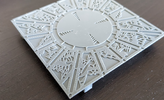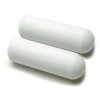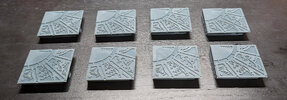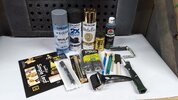Hello!
I am working on painting a 3D-printed resin model where I have a bunch of raised texture on a flat surface (Hellraiser Lament Configuration puzzle box):

I need to paint gold on the raised part, but black or brown on the lower surfaces. I've done some research, and identified a few techniques that may or may not work:
1. Start with a dark base coat, then simply brush (or drybrush) paint the gold on top, carefully. (The hard way)
2. Paint the gold first, don't worry about staying in the lines, then use a thick wash for the darker colors.
3. Paint the gold messy, then dipping in a dark wash, then wiping off the top surfaces.
4. Use a foam brush or swab and almost drybrush the gold across the top.
5. Use a gold marker (not good for larger surfaces).
But I was thinking, it sure would be easier if there were some sort of "paint roller" that was rigid enough not to drop paint in the lower areas.
So you modelmaking experts, can you tell this newbie how you might tackle such a challenge? Of course I am printing extra so I can experiment as well.
UPDATE: Further research uncovered the thing that is a rubber roller. I may give that a try, as it seems rigid enough. Still interested in anyone else's preferred techniques!
Thank you so much!
Bill
I am working on painting a 3D-printed resin model where I have a bunch of raised texture on a flat surface (Hellraiser Lament Configuration puzzle box):

I need to paint gold on the raised part, but black or brown on the lower surfaces. I've done some research, and identified a few techniques that may or may not work:
1. Start with a dark base coat, then simply brush (or drybrush) paint the gold on top, carefully. (The hard way)
2. Paint the gold first, don't worry about staying in the lines, then use a thick wash for the darker colors.
3. Paint the gold messy, then dipping in a dark wash, then wiping off the top surfaces.
4. Use a foam brush or swab and almost drybrush the gold across the top.
5. Use a gold marker (not good for larger surfaces).
But I was thinking, it sure would be easier if there were some sort of "paint roller" that was rigid enough not to drop paint in the lower areas.
So you modelmaking experts, can you tell this newbie how you might tackle such a challenge? Of course I am printing extra so I can experiment as well.
UPDATE: Further research uncovered the thing that is a rubber roller. I may give that a try, as it seems rigid enough. Still interested in anyone else's preferred techniques!
Thank you so much!
Bill
Last edited:



